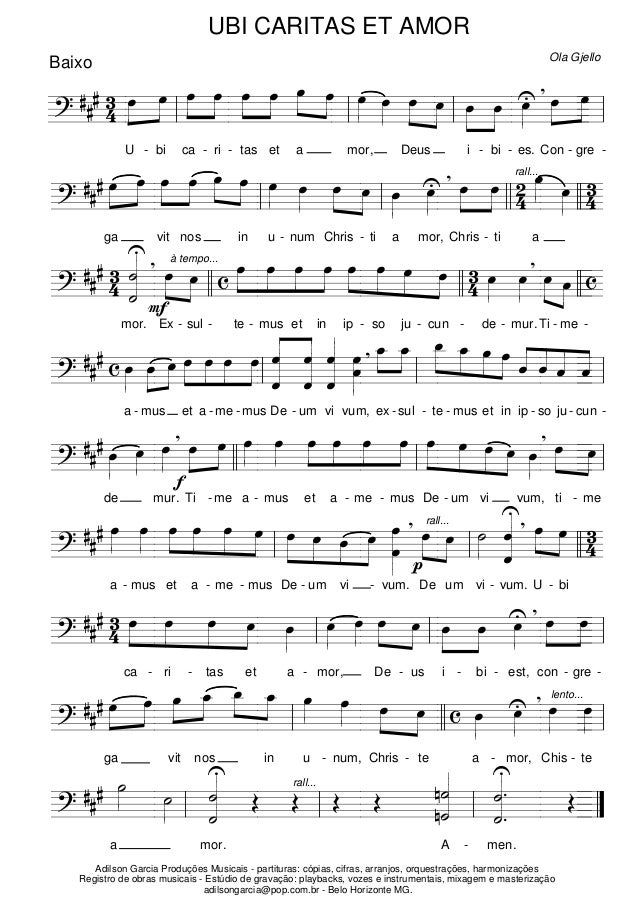
Ola Gjeilo Ubi Caritas Pdf To Doc
Accurately and with appropriate nuance and emotion. Cog nit ive: Stud ents wil l un ders tand and appl y th e pri ncip les of Gr egor ian chan t to the ir i nter pret ati on of this piece.
Ubi Caritas – Ola Gjeilo Ubi caritas et amor, Deus ibi est. Waar liefde is, daar is God. Klik hier voor de volledige nieuwsbrief in pdf.
Experiential: Students will encounter connection between ensemble members whilst singing this piece. Constructivist: Throughout the process of learning and performing this piece, students will develop an appreciation of chant and chant-based music, and have the tools to discover the influence of chant in other music in their own libraries. (Tone, Diction, Intonation, Posture, Breath, Phonation, Balance and Blend) Beca use th is pie ce is b ased o n cha nt, it r equir es a f ree, o pen, re sonan t tone that is not fo rced o r manipulated, as well as a mastery of breath support to carry singers through the long lines.
The unison chant lines require excellent blend. The balance must be handled delicately so that one part does not overpower—this is especially important because of the close harmonies which will go out of tune if any part is too strong or weak. Uni fied vow el soun ds are impor tant fo r tunin g this piece, a nd con sonant s must be timed together and propel the line forward. (Historical Perspective, Stylistic Integrity, Choral Artistry) Ubi Caritas is a valuable tool for teaching plainchant in a modern context. It directly quotes the original chant, which means that it can be pulled out as a stepping stone to teaching other chant. Teacher and students could do a side by side comparison of the original notation and the chant notation as a lesson on the history and development of modern notation.
Throughout work on this piece, students and teacher will discuss and apply the principles of chant singing to bring authenticity to their performance. Questioning, clarifying, summarizing, connecting.) Day 1 (H. St anley teach es): P lay re cordi ng, br iefly sight r ead Day 2: Bri ef re- intro duct ion/r evie w of first p age.
Thi s is bas ed on c hant. As k stude nts to s ing wha t they recall from sight-reading briefly at the last rehearsal. Brief discussion of chant: no bar lines, no measures, free and easy sound, open, bright. I will sing as written on the page but without any style, then with style, and ask students to compare the two performances. They will then try singing in the correct style. Day 3: F ocused vocali zations (warm u ps) on l egato so und an d tuning. Ask st udent s to su mmari ze the chara cteris tics o f chan t that we br iefly di scuss ed las t week —writ e them on the board and use them as a peer assessment for students.
(Forward motion, tuning, light sound, momentum, deemphasizing ends of phrases, clear diction, bright vowels) One group sings the opening chant, the other listens, and discuss if they met the expectations they discussed, then switch (SA then TB, or ST then AB, they will have the choice). All st udent s will sing m. Did t hey m eet e xpect ation s as a group? What could they do to impro ve?
33-42: same or different? (almost same) Let’s apply our improvements to this section and solidify differences between sections. New se ction: Et ex c orde m. 28- 32 What is special about this section?
Why might there be a unison in measure 29? What is special here? Definit ion o f text (sinc ere—s incer us—pu re, w hole, clean, genu ine, s incer e, uni njure d) What can we as musicians do to make this successful? Crack cad 2017. Support, unified vowel Day 4: Rev iew o f cha nt pr incip les, s ing fi rst sec tion -Go to the beginning of each section and identify solfege syllables.